Ragdoll Cat is a large, affectionate cat breed known for its docile and gentle temperament. The name “Ragdoll” is derived from the tendency of Ragdolls to go limp and relaxed when picked up. Ragdolls are intelligent and playful cats, and they make great companions for families with children. Ragdolls are also known for their silky fur, blue eyes, and gentle personality. They are often referred to as “puppy cats” or “lap cats” because they love to cuddle and play fetch.
The Ragdoll breed was developed in the early 1960s by Ann Baker, a Persian breeder in Riverside, California. Baker crossed a white Persian with a Birman to create the Ragdoll. The white cat named “Josephine” is said to be the foundation of the Ragdoll breed. In the 1970s, it was recognized by the Cat Fanciers’ Association (CFA). Baker patented the Ragdoll name and established the International Ragdoll Cat Association (IRCA) in 1975. Later, the Ragdoll breed was introduced to the UK in 1981. Today, Ragdolls is considered to be one of the most popular cat breeds in the world.
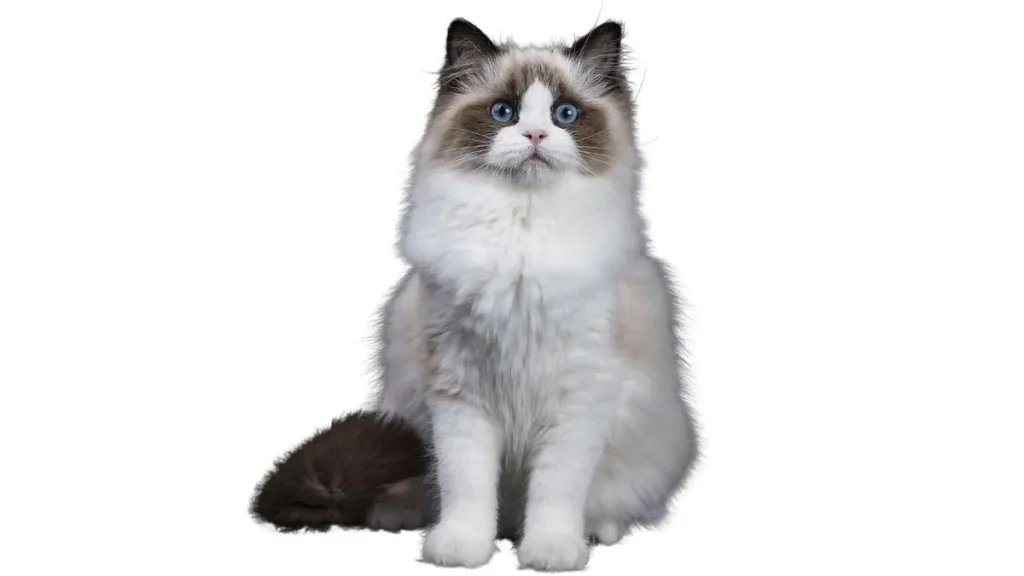
Ragdoll Cat Appearance
Ragdolls have a long, muscular body with a broad chest and short neck. They have a thick and lengthy tail. They have blue eyes that are a deep, intense color.
Size & Weight: A Large breed of cat.
Male Cats weigh – 12 to 20 pounds and Female Cats weigh- 8 to 15 pounds.
Coat: Ragdolls have a “pointed” coat, which means that their body is lighter colored than their face, ears, legs, and tail. They are also known for their low-maintenance semi-long & and silky coat.
Color: Ragdolls come in a variety of colors, including seal point, blue point, chocolate point, and lilac point. The most common color is a seal (chocolate.
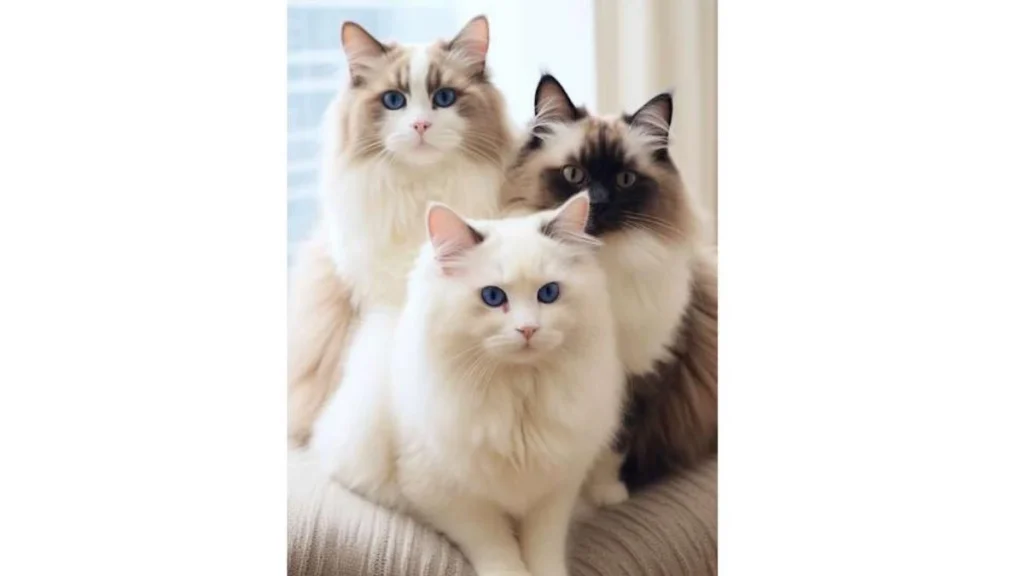
Ragdoll Cat Personality, Health & Care
Health: Ragdolls are generally a healthy breed, but they can be prone to certain health problems, such as hypertrophic cardiomyopathy (HCM), a heart condition. To keep them fit, a routine screening by the veterinarian is needed. This will help to ensure to keep them healthy and to catch up any potential health problems early.
Temperament: Ragdolls are very patient and tolerant of children and other pets because of their gentle and affectionate nature.
Playful: Ragdolls are also playful cats who enjoy being active. They are not known for being lap cats but enjoy being around people.

Ragdoll Lifespan
Ragdoll is a breed having an average lifespan is 12 to 16 years. However, there are cases when Ragdolls lived for 18 years or longer. A Ragdoll’s lifespan can be affected by several factors, including genetics, nutrition, environment, and overall health.
Ragdoll Cat Price & Overall Annual Spending
Ragdolls are relatively expensive cats. The cost of a purebred Ragdoll kitten can range from $800 to $2,000. Some show quality Ragdoll kittens, which can cost upwards of $2,500. The factors that can affect the price of a Ragdoll cat are Kitten quality, Breeder reputation, Bloodline, quality of the breed, Region, etc.
As an owner, one has to spend around $1200 to $1500 annually on average for Ragdoll of which-
Food and treat cost: $500
Vet care cost: $400
Grooming & Training cost: $200
Other expenses: $200
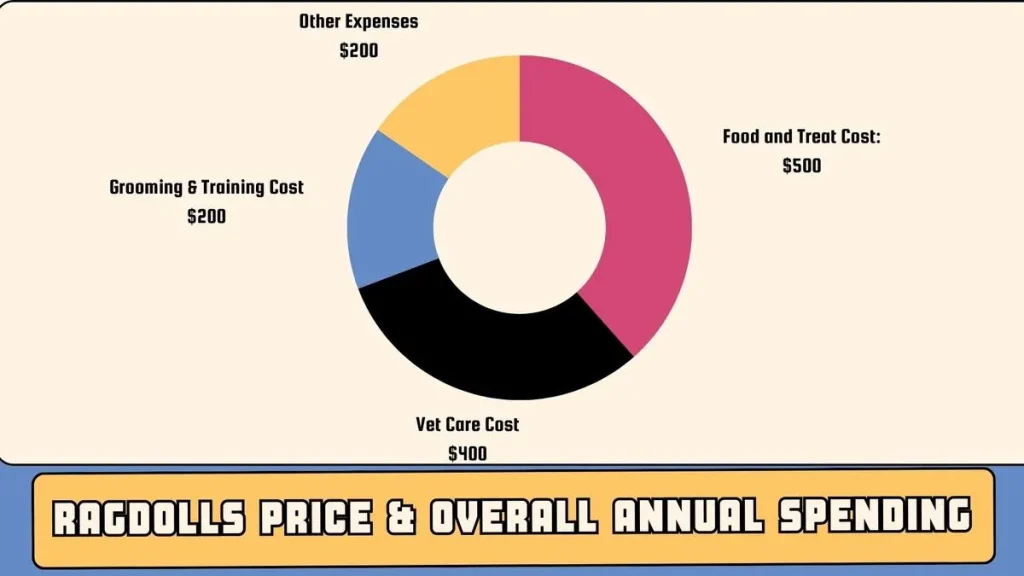
Ragdoll Food
A safe and healthy diet for a Ragdoll cat should consist of:
High-quality protein: The majority of a Ragdoll’s diet should be made up of protein from meat, poultry, fish, or eggs.
Fats: Foods containing healthy Fats like omega-3 fatty acids are essential for a Ragdoll’s coat, skin, and overall health.
Carbohydrates: Carbohydrates should be limited in a Ragdoll’s diet.
Fiber: Fiber is important for digestion and helps to prevent hairballs. Foods that contain some fiber are -pumpkin or carrots.
Vitamins and minerals: Ragdolls need food fortified with nutrients like vitamins and minerals to stay healthy.
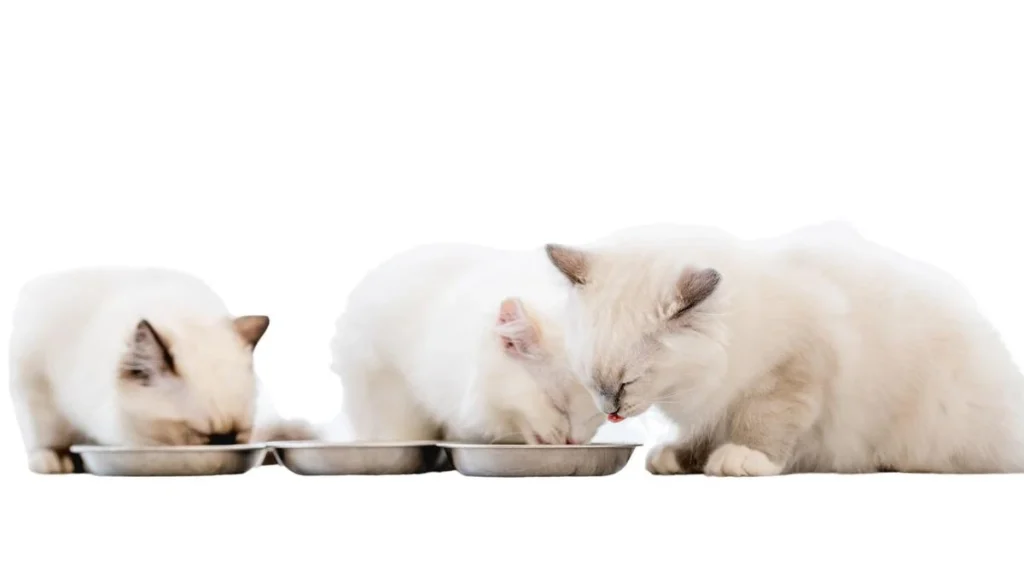
Some specific foods that are safe for Ragdolls:
Dry foods that are high in protein and low in carbohydrates.
Wet food is more moisture-rich than dry food, which can help to prevent urinary tract problems.
Raw food is a naturally handled and prepared diet that is high in protein and nutrients.
Avoidable food items:
Grains, Dairy products, Salty foods, Sweet foods, Fatty foods, Avocado, Onions and garlic, Grapes and raisins, etc.
Ragdoll Cat Pros & Cons
Pros:
◉ Gentle and docile temperament
◉ Very affectionate and loving
◉ Intelligent and easy to train
◉ Low-maintenance grooming
◉ Moderate shedding
◉ Long lifespan
◉ Stunningly beautiful appearance
Cons:
◉ Not suited for outdoor living
◉ Can be prone to certain health problems, such as polycystic kidney disease and hypertrophic cardiomyopathy
◉ Can be expensive to purchase and maintain
◉ May not be the best choice for active families or those who are gone from home for long periods.
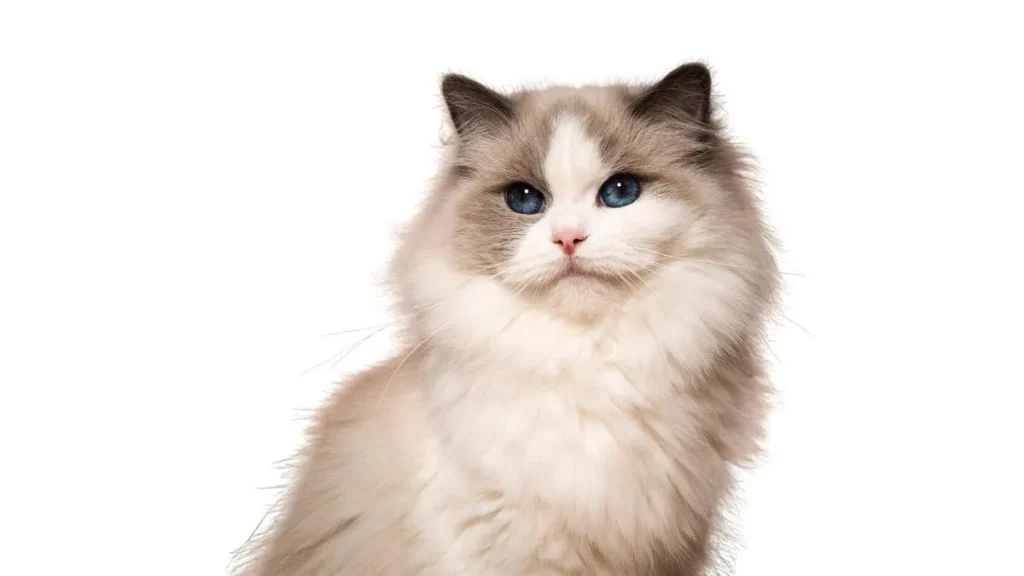
Ragdoll fun facts
They love to fetch and play with the toy.
They are slow to mature and reach full size when they are about 4 years old.
They can be trained to do tricks such as fetch and sit because of their intelligence.
They are also known for being very water-loving cats. Some of them even enjoy swimming.
Kittens are born white and their coat color and pattern begin to develop within the first few weeks of life.
They are known for their beautiful blue eyes. However, some have green or hazel eyes, especially as they age.
Ragdoll Cat in America
Ragdolls are estimated to be around 500,000, about 5% of the total cat population in America. The Ragdoll’s popularity has been growing steadily in recent years. At present, Ragdoll is one of the most popular cat breeds out of 70 breeds in America.
The Ragdoll is popular in all parts of the country. Some of the states with the highest populations of Ragdolls include California, Texas, Florida, New York, and Pennsylvania.
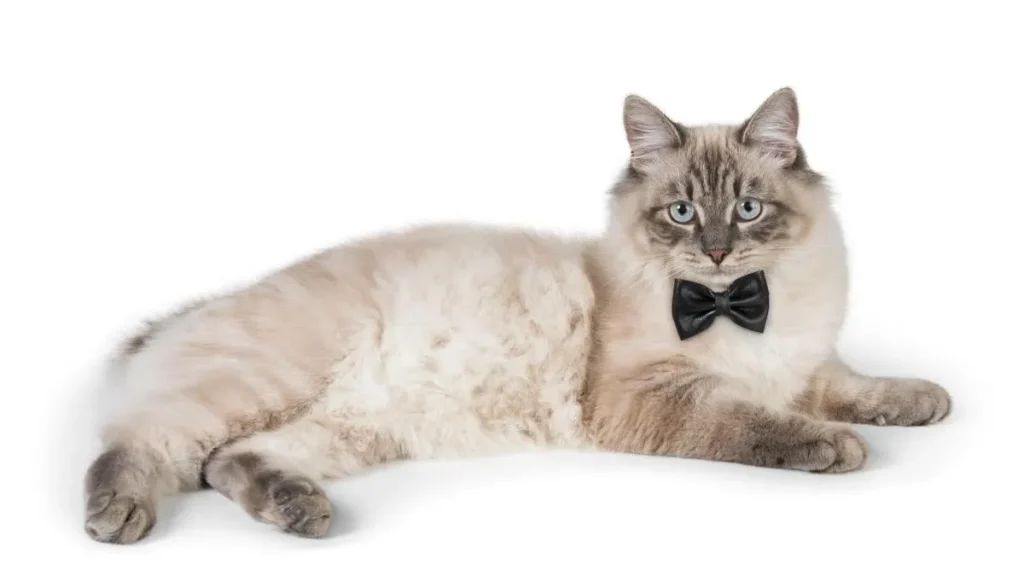
Ragdolls are wonderful companions, but they do require some special care and attention. They are especially well-suited for families with children, as they are known for being patient and tolerant. As a sweet, loving cat, a Ragdoll may be the perfect breed for the owner.
Thanks For Reading. Hope You Guys Like The Blog. Please Comment with feedback About This Blog And the related Blog Post You Need To Read. More Information About Pets Visit Happy Hungry Pets.
Previews Blog About Persian Cat.

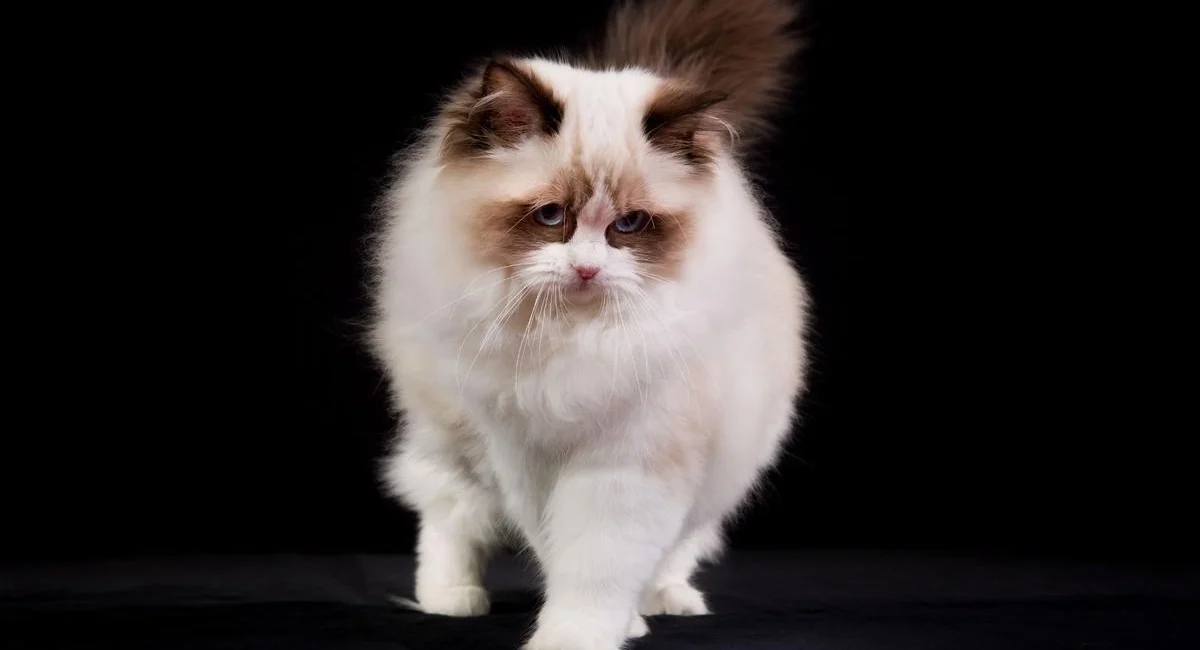
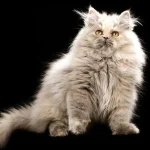
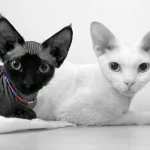
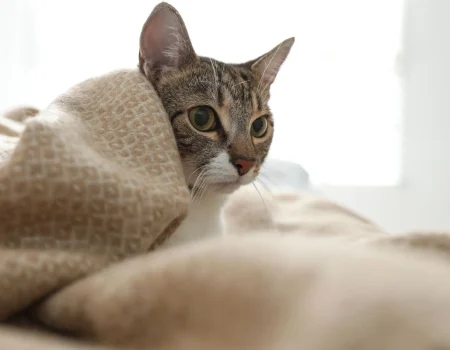
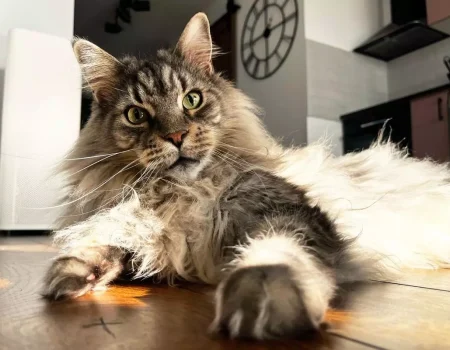
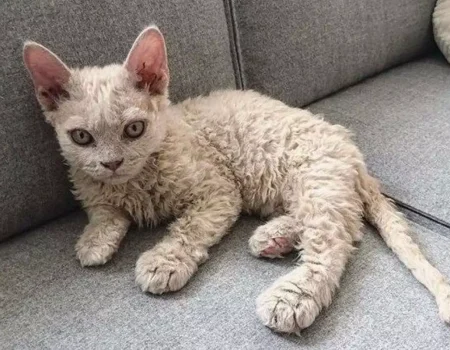
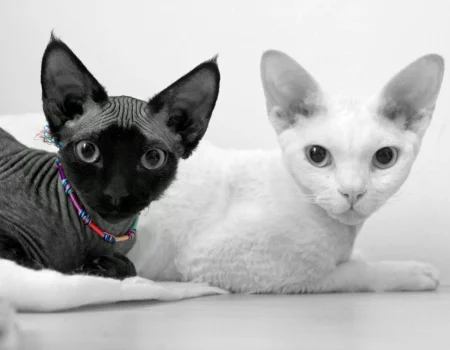
No Comment! Be the first one.